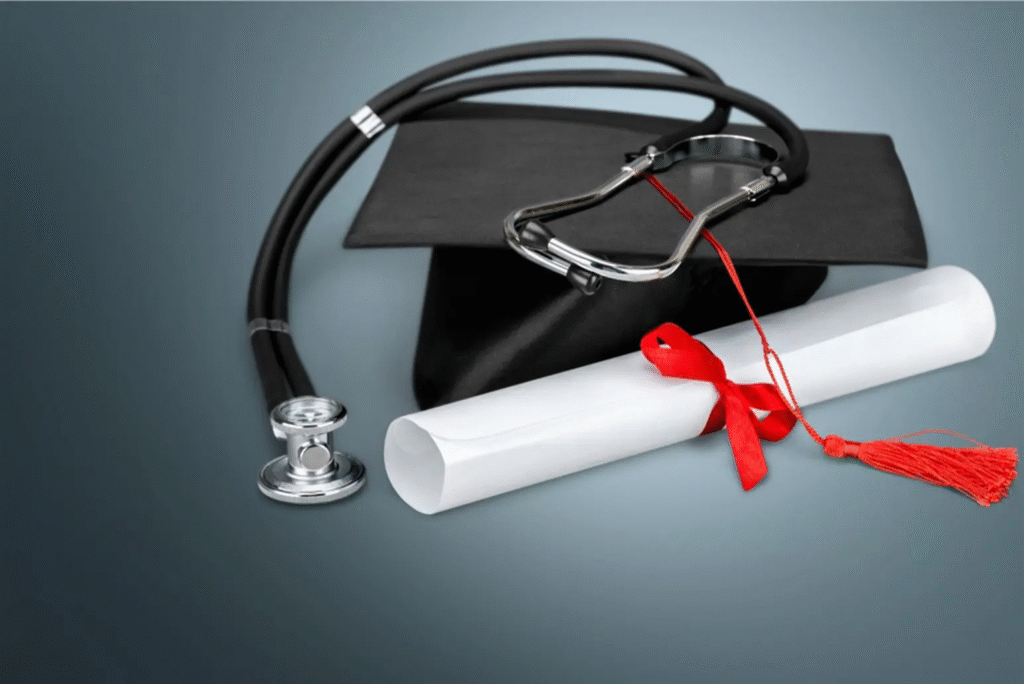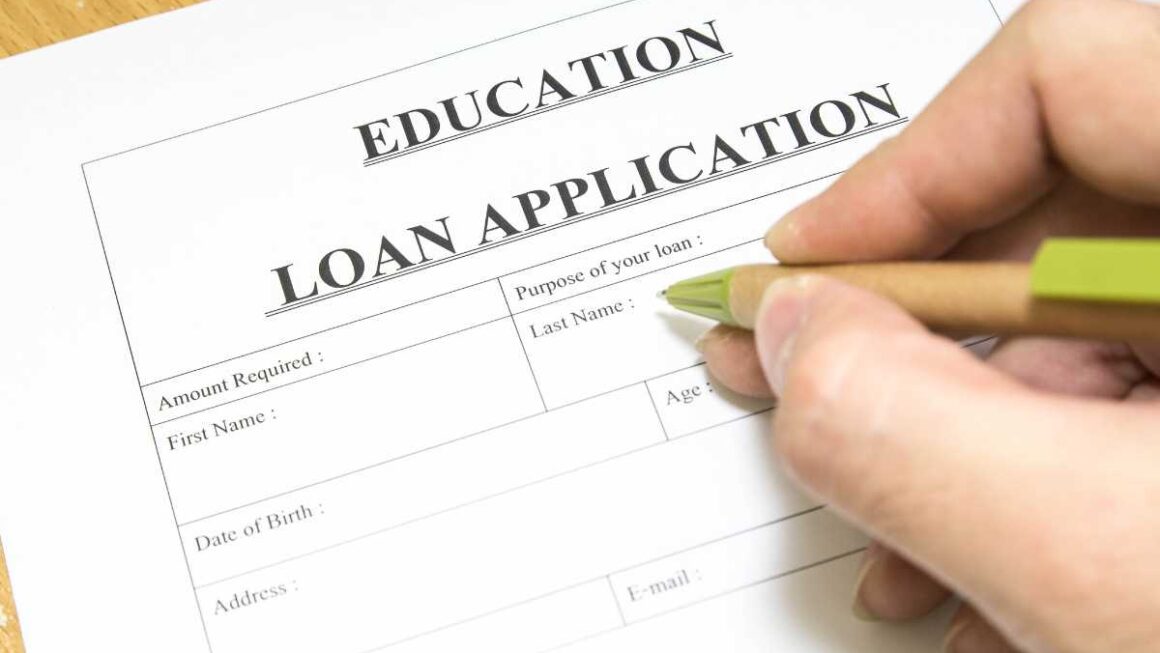Pursuing a medical degree is a noble and rewarding journey, but it often comes with significant financial challenges. Medical education loans serve as a crucial financial tool for aspiring doctors, enabling them to cover tuition fees, living expenses, and other associated costs. In this comprehensive guide, we will explore the top medical education loan options available, focusing on both Indian and international avenues.
The cost of medical education has been rising steadily, making it increasingly difficult for students to finance their studies independently. Medical education loans bridge this gap, providing students with the necessary funds to pursue their dreams. These loans are offered by various banks, financial institutions, and government schemes, each with its own set of terms and conditions.
. In addition to banks, non-banking financial institutions like HDFC Credila have carved a niche in providing education loans for medical aspirants, particularly for studying abroad, offering benefits such as loan approval prior to admission and customized repayment plans based on the borrower’s profile and future earning potential. For international medical education, global lenders like MPOWER Financing and Prodigy Finance have revolutionized student lending by eliminating the need for collateral or cosigners, instead basing their credit decisions on the student’s potential future income and academic credentials. These loans, however, generally come with slightly higher interest rates compared to traditional bank loans but provide unmatched accessibility to international students who otherwise might struggle to secure funding. While these loans ease the financial pressure, students must carefully evaluate and compare loan terms, interest rates—whether fixed or floating—processing fees, and the total cost of borrowing before committing. It is equally important to factor in tax benefits available under Indian law, such as deductions on interest paid, which can significantly reduce the financial burden over time. The availability of government schemes and subsidies for eligible students further enhances the affordability of medical education. However, despite the convenience, taking on a large education loan requires responsible borrowing, financial planning, and an understanding of the repayment commitments, which often begin after a moratorium period post-graduation. With thoughtful selection and strategic management of education loans, aspiring doctors can focus on their studies without undue financial stress, paving the way for a successful and impactful career in healthcare.
Key Takeaways
- Medical education loans make it possible to pursue a career in medicine without upfront financial strain.
- International lenders like MPOWER and Prodigy offer no-collateral loans for study abroad.
- Compare interest rates, processing fees, moratoriums, and repayment terms to find the best loan.
- Tax benefits and flexible repayment options are added advantages for borrowers in India.
- Medical education is expensive, often requiring loans to cover tuition, living expenses, and other costs.
- Top Indian banks offering medical education loans include SBI, Bank of Baroda, ICICI Bank, HDFC Bank, and Punjab National Bank.
- Loan amounts can go up to ₹1.5 crore or more depending on the lender and course location.
- Interest rates vary between 8.5% to 14%, with some loans offering subsidies or lower rates for eligible students.
- Moratorium period allows repayment to start after course completion plus a grace period.
- Collateral may be required for loans exceeding a certain amount, often ₹7.5 lakh or ₹10 lakh.
- Co-applicant (usually parent or guardian) is generally required for Indian bank loans.
- Private lenders like HDFC Credila offer customized loans with flexible repayment plans and no collateral up to certain limits.
- International lenders like MPOWER Financing and Prodigy Finance provide collateral-free loans based on future earning potential.
- Government schemes provide interest subsidies and tax benefits, e.g., Section 80E tax deductions.
- Application requires admission proof, academic records, ID, and financial documents of the applicant and co-applicant.
- Prepayment and foreclosure of loans are allowed in most cases without penalty.
- Choosing the right loan requires comparing interest rates, processing fees, repayment tenure, and eligibility.
- Proper financial planning is essential to manage loan repayment without stress post-graduation.
Top Medical Education Loan Providers for Studying

1. Prodigy Finance
- Loan Amount: Up to $250,000.
- Interest Rate: Variable rates based on the loan amount and country.
- Repayment Tenure: Up to 15 years.
- Eligibility: International students with confirmed admission to participating medical institutions.
- Features: No cosigner or collateral required; loan decisions based on future earning potential.
2. MPOWER Financing
- Loan Amount: Up to $50,000.
- Interest Rate: Fixed rates starting at 6.99% per annum.
- Repayment Tenure: Up to 10 years.
- Eligibility: International students from select countries with confirmed admission.
- Features: No cosigner or collateral required; loan decisions based on future earning potential.
Eligibility Criteria for Medical Education Loans
- Nationality: Indian nationals, NRIs, PIOs, and OCIs.
- Age: Typically between 16 to 35 years.
- Admission: Confirmed admission to a recognized medical institution.
- Academic Record: Good academic standing.
- Co-borrower: A co-borrower, usually a parent or guardian, is required.
Pursuing a medical degree is often regarded as one of the most prestigious and rewarding academic paths, but it comes with a significant financial burden that many students and families find challenging to manage without external financial support. Medical education loans have become a vital resource in bridging this gap, providing students with the necessary funds to cover hefty tuition fees, costly living expenses, and additional costs such as equipment, books, and examination fees. The landscape of medical education loans is vast and diverse, with various options available both domestically and internationally, catering to students aspiring to study in their home country or abroad. In India, leading public sector banks such as State Bank of India (SBI), Bank of Baroda, Punjab National Bank, and private sector banks including ICICI and HDFC offer specialized education loan products tailored specifically for medical studies. These loans often come with attractive features like low-interest rates, flexible repayment tenures extending up to 15 years, moratorium periods that cover the entire duration of the course plus a grace period post completion, and the option of collateral-free loans up to certain limits
Medical Education Loans Cover High Tuition and Living Costs

Medical courses are among the most expensive, with fees for MBBS, MD, or equivalent degrees ranging widely depending on the country and institution. Besides tuition, students must also budget for accommodation, food, books, travel, and examination fees. Education loans are designed to cover all these expenses, ensuring students can focus on their studies without financial stress.
Major Indian Banks Offering Medical Education Loans
Leading banks such as State Bank of India (SBI), ICICI Bank, HDFC Bank, Bank of Baroda, and Punjab National Bank provide dedicated education loans for medical studies. These banks have tailored loan products with specific benefits like moratorium periods, flexible repayment schedules, and tax deductions.
Loan Amounts Can Reach ₹1.5 Crore or More
Depending on the lender and course location, education loans can range from a few lakhs to ₹1.5 crore or higher. Indian banks typically finance higher amounts for foreign education compared to domestic courses, reflecting higher tuition fees abroad.
Interest Rates Range from 8.5% to 14%
Interest rates vary based on the lender, loan amount, borrower’s creditworthiness, and whether the rate is fixed or floating. Some government-backed schemes or priority sector lending may offer subsidized rates for eligible candidates.
Moratorium Period Covers Study Duration Plus Grace Period
Most medical education loans offer a moratorium period, which means repayment starts only after course completion, often with an additional 6 to 12 months to find employment and stabilize financially. This helps graduates focus on their early careers without immediate loan burdens.
Collateral is Required for Loans Above ₹7.5 Lakh or ₹10 Lakh
Loans up to certain limits are often granted without collateral, but for larger amounts, banks typically require collateral in the form of property or fixed deposits to mitigate lending risk.
Co-Applicant is Usually Required

In Indian bank loans, a co-applicant—usually a parent or guardian—is mandatory. Their income and credit profile help in securing the loan and determining the loan amount.
Lack of Credit History: Most students don’t have a strong credit history or income, so a co-applicant provides added assurance to the lender.
Risk Mitigation: If the student defaults, the co-applicant is legally responsible for repaying the loan.
Better Loan Terms: With a co-applicant who has good credit, the student may qualify for lower interest rates or higher loan amounts.
- Typically a parent, legal guardian, spouse, or sibling.
- In some cases, a non-relative with strong financials may qualify (depends on lender policy).
Medical Education Loans That Often Require Co-Applicants:
.
- USA: Private lenders like Sallie Mae, Discover, or Citizens Bank often require a co-signer unless the student has a strong credit profile.
- Canada: Provincial loans may not require a co-applicant, but private ones often do.
Private Lenders Offer Customized Loan Options
Non-bank lenders like HDFC Credila provide flexible loans tailored to the borrower’s needs, including loans for both domestic and foreign education, with options for moratorium, partial disbursal, and easy documentation.
International Lenders Provide No-Collateral Loans Based on Future Earnings
Companies such as MPOWER Financing and Prodigy Finance offer loans without collateral or cosigners, assessing applicants based on their academic profile and projected future income, making them attractive for international students without local guarantors.
Tax Benefits Available Under Section 80E
In India, interest paid on education loans is tax-deductible for up to 8 years under Section 80E of the Income Tax Act, reducing the overall financial burden.
Application Requires Admission and Financial Documents
To apply, students must provide their admission letter, fee structure, identity proofs, academic records, and income documents of the applicant and co-applicant. For foreign loans, additional documents like visa and passport may be required.
Prepayment and Foreclosure Usually Allowed Without Penalties
Most lenders permit early repayment or full foreclosure of the loan without charging extra fees, allowing borrowers to save on interest if they repay ahead of schedule.
Compare Loans Carefully for Rates, Fees, and Terms
Before selecting a loan, it is vital to compare interest rates (fixed vs. floating), processing fees, moratorium terms, repayment tenure, and collateral requirements to find the best fit.
Responsible Borrowing and Financial Planning Are Essential
Since education loans can be substantial, students and families should plan repayment realistically based on expected future income, avoiding over-borrowing and ensuring timely repayments to maintain good credit health.
Also read:What Is an EMI and How Does It Work?
Conclusion
Medical education loans are essential tools that empower aspiring doctors to pursue their academic goals without being limited by financial constraints. With a wide range of loan products available—both in India and internationally—students now have more flexible and accessible options than ever before. Whether you are looking to study medicine in your home country or abroad, there’s likely a loan that fits your needs in terms of interest rate, repayment terms, and eligibility.
As education is a long-term investment, it’s critical to:
- Compare loan options carefully.
- Understand the fine print such as moratorium periods, processing fees, and collateral requirements.
- Plan your repayment wisely based on your expected future income.
Taking a medical education loan is not just a financial decision—it’s a strategic one that can shape your entire career.
FAQs
Can I get a medical education loan without collateral?
Yes, many lenders in India and abroad (like HDFC Credila, MPOWER Financing, and Prodigy Finance) offer collateral-free loans up to a certain amount, depending on the course and institution.
What is the maximum loan amount I can get for MBBS?
It varies by lender. In India, SBI and ICICI offer up to ₹1.5–₹3 crore. International lenders like Prodigy Finance offer up to $250,000.
Is the interest paid on education loans tax deductible?
Yes. Under Section 80E of the Indian Income Tax Act, you can claim a deduction on the interest paid on education loans for up to 8 years.
What is the repayment period for a medical education loan?
Typically, repayment periods range from 10 to 15 years, including a moratorium period (during the course and an additional 6–12 months after).
Can I prepay my education loan without penalty?
Most lenders allow prepayment, and many do not charge penalties for early repayment. Always confirm this with your lender.
Do I need a co-applicant or guarantor for a student loan?
For most Indian banks, yes. A co-borrower (usually a parent/guardian) is typically required. However, international lenders like MPOWER and Prodigy Finance may not require one.
When should I start applying for a medical education loan?
You should start as soon as you receive your admission letter. The loan application process can take 2–4 weeks.



